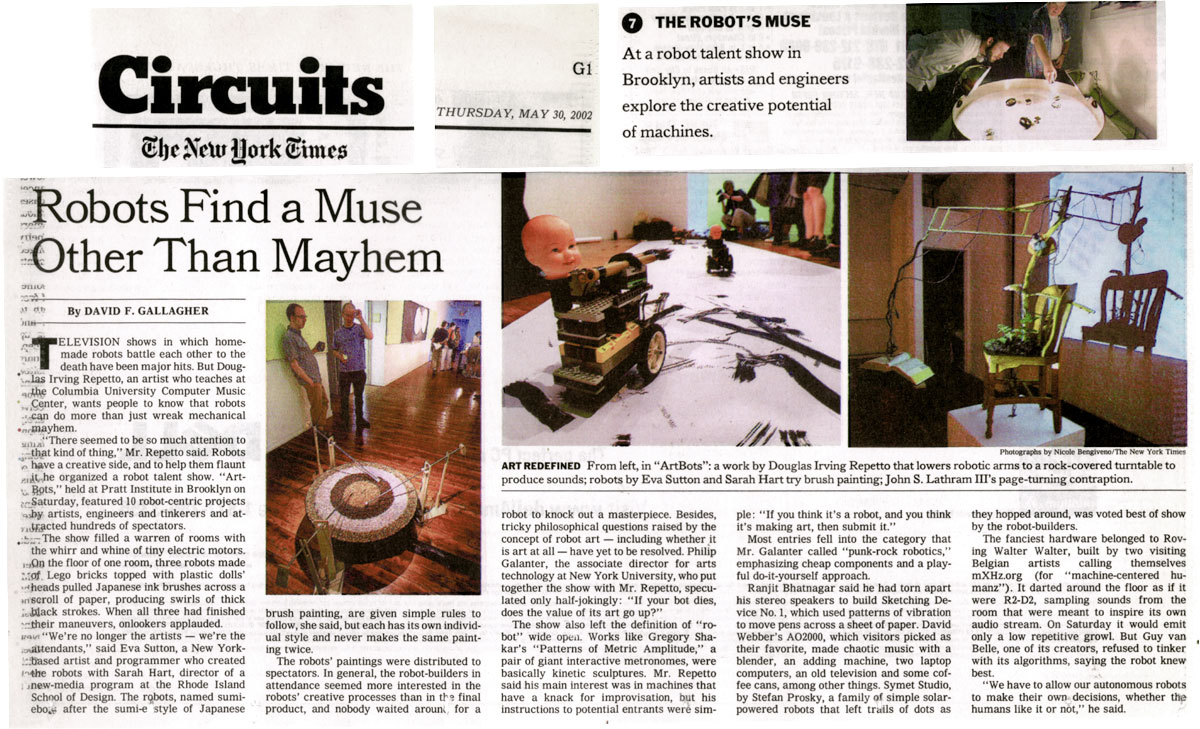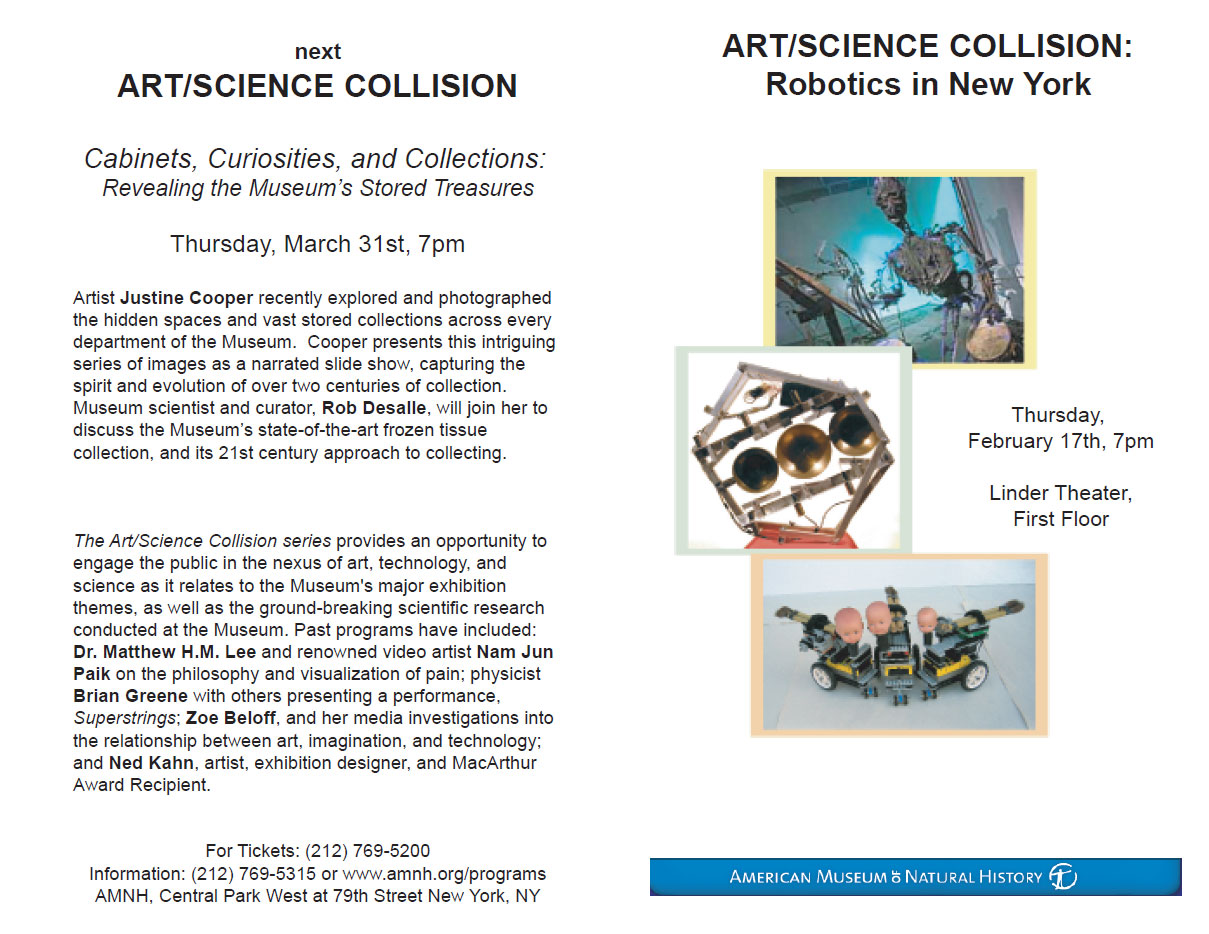Robots Find a Muse Other Than Mayhem
By David F. Gallagher – May 30, 2002 – The New York Times
TELEVISION shows in which homemade robots battle each other to the death have been major hits. But Douglas Irving Repetto, an artist who teaches at the Columbia University Computer Music Center, wants people to know that robots can do more than just wreak mechanical mayhem.
“There seemed to be so much attention to that kind of thing,” Mr. Repetto said. Robots have a creative side, and to help them flaunt it he organized a robot talent show. “ArtBots,” held at Pratt Institute in Brooklyn on Saturday, featured 10 robot-centric projects by artists, engineers and tinkerers and attracted hundreds of spectators.
The show filled a warren of rooms with the whirr and whine of tiny electric motors. On the floor of one room, three robots made of Lego bricks topped with plastic dolls’ heads pulled Japanese ink brushes across a scroll of paper, producing swirls of thick black strokes. When all three had finished their maneuvers, onlookers applauded.
“We’re no longer the artists — we’re the attendants,” said Eva Sutton, a New York-based artist and programmer who created the robots with Sarah Hart, director of a new-media program at the Rhode Island School of Design. The robots, named sumi-ebots after the sumi-e style of Japanese brush painting, are given simple rules to follow, she said, but each has its own individual style and never makes the same painting twice.
The robots’ paintings were distributed to spectators. In general, the robot-builders in attendance seemed more interested in the robots’ creative processes than in the final product, and nobody waited around for a robot to knock out a masterpiece. Besides, tricky philosophical questions raised by the concept of robot art — including whether it is art at all — have yet to be resolved. Philip Galanter, the associate director for arts technology at New York University, who put together the show with Mr. Repetto, speculated only half-jokingly: “If your bot dies, does the value of its art go up?”
The show also left the definition of “robot” wide open. Works like Gregory Shakar’s “Patterns of Metric Amplitude,” a pair of giant interactive metronomes, were basically kinetic sculptures. Mr. Repetto said his main interest was in machines that have a knack for improvisation, but his instructions to potential entrants were simple: “If you think it’s a robot, and you think it’s making art, then submit it.”
Most entries fell into the category that Mr. Galanter called “punk-rock robotics,” emphasizing cheap components and a playful do-it-yourself approach.
Ranjit Bhatnagar said he had torn apart his stereo speakers to build Sketching Device No. 1, which used patterns of vibration to move pens across a sheet of paper. David Webber’s AO2000, which visitors picked as their favorite, made chaotic music with a blender, an adding machine, two laptop computers, an old television and some coffee cans, among other things. Symet Studio, by Stefan Prosky, a family of simple solar-powered robots that left trails of dots as they hopped around, was voted best of show by the robot-builders.
The fanciest hardware belonged to Roving Walter Walter, built by two visiting Belgian artists calling themselves mXHz.org (for “machine-centered humanz”). It darted around the floor as if it were R2-D2, sampling sounds from the room that were meant to inspire its own audio stream. On Saturday it would emit only a low repetitive growl. But Guy van Belle, one of its creators, refused to tinker with its algorithms, saying the robot knew best.
“We have to allow our autonomous robots to make their own decisions, whether the humans like it or not,” he said.


